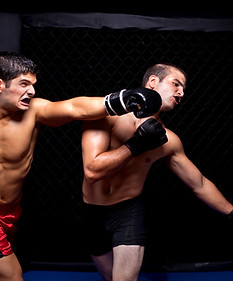



Acupuncture for Temporomandibular Joint (TMJ) Disorder
Do you cletch or glind your teeth at night?
Does your dentist suggest you wear a night guard?
You are wearing the night guard but still have pain, why?
You take over-the-counter nonsteroidal anti-inflammatory drugs (NSAIDs), but not cure the problem?
This joint is located just in front of the ear, and pain associated with TMJ syndrome may involve the face, eye, forehead, ear, neck or etc.
-
Signs and symptoms include
-
jaw clicking and popping,
-
stiff or sore jaw muscles,
-
pain in the temple area, or
-
clicking of the jawPain that feels like a toothache
-
Ear pain or sounds of cracking in the ears
-
Ringing or popping sounds in the ears (tinnitus) or
-
a sense of fullness in the ears
-
Headaches, including migraines
-
Blurred vision
-
Tight, stiff, or sore jaw or neck muscles
-
Muscle spasm in the jaw
-
Facial pain, mouth pain, cheek pain, or chin numbness or tingling
-
Pain at the base of the tongue
-
Pain, swelling, or a lump in the temple area
-
Difficulty chewing
-
Shoulder pain
-
Locking or dislocation of the jaw (usually after widely yawning), referred to as lockjaw
-
Dizziness/ verigo
-
Research data:
While there are numerous ways to effectively treat temporomandibular joint (TMJ) disorders, acupuncture has been shown in several well-designed studies to be very effective and relatively safe.
In a 2007 study, TMJ-related short-term muscle pain was significantly improved in people receiving acupuncture. A recent British study of 70 cases of dental patients receiving acupuncture for TMJ indicated that 85% of patients benefited with an average reduction in pain intensity of 75%. A 2008 study reported high long-term patient satisfaction and improvement of symptoms 18 to 20 years following acupuncture and/or interocclusal appliance (bite plate or splint) therapy.
How does acupuncture work on TMJ pain?
There can be TMJ pain and underlying problems. Often it relates with stress or anxiety tramua held in the jaw or contracted muscles in the jaw and face. Acupuncture can help to both relax these targeted muscles and decrease the overall stress level in the body to relieve TMJ discomfort.
Can other problems cause this pain?
Yes, the practitioners will exam to see the root causes of the pain.
Some other factors involved in TMJ pain are:
-
misalignment (malocclusion) of or trauma to the teeth or jaw,
-
teeth grinding (bruxism),
-
poor posture,
-
stress or anxiety,
-
arthritis and other inflammatory musculoskeletal disorders,
-
orthodontic braces, and
-
excessive gum chewing
-
A bad bite, called malocclusion
-
Orthodontic treatment, such as braces and the use of headgear
-
Wearing away of the disk or cartilage in the joint
Who is Most At Risk?
The risk for TMJ problems may be higher with these factors:
-
Gender: more women than men seek treatment
-
Age: people ages 30 to 50 have the most problems
-
Children and adolescents with arthritis
-
Grinding teeth, clenching jaw
-
Malocclusion (bad bite)
-
High stress levels
Does acupuncture treatment interact with dentists or modern medical treatments?
Acupuncture does not interact with these modern medical treatments and can often replace them as therapy without a their risks of side effects.
References:
Abe S, Kawano F, Kohge K, et al. Stress analysis in human temporomandibular joint affected by anterior disc displacement during prolonged clenching. J Oral Rehabil. 2013; 40(4):239-46.
Abramowicz S, Susarla HK, Kim S, Kaban LB. Physical findings associated with active temporomandibular joint inflammation in children with juvenile idiopathic arthritis. J Oral Maxillofac Surg. 2013; 71(10):1683-7.
Bergström I, List T, Magnusson T. A follow-up study of subjective symptoms of temporomandibular disorders in patients who received acupuncture and/or interocclusal appliance therapy 18 - 20 years earlier. Acta Odontol Scand. 2008 Apr;66(2):88-92.
Berguer A, Kovacs F, Abraira V, et al. Neuro-reflexotherapy for the management of myofascial temporomandibular joint pain: a double-blind, placebo-controlled, randomized clinical trial. J Oral Maxillofac Surg. 2008 Aug;66(8):1664-77.
Bronfort G, Haas M, Evans R, Leininger B, Triano J. Effectiveness of manual therapies: the UK evidence report. Chiropr Osteopat. 2010 Feb 25;18:3.
Emara AS, Faramawey MI, Hassaan MA, Hakam MM. Botulinum toxin injection for management of temporomandibular joint clicking. Int J Oral Maxillofac Surg. 2013; 42(6):759-64.
